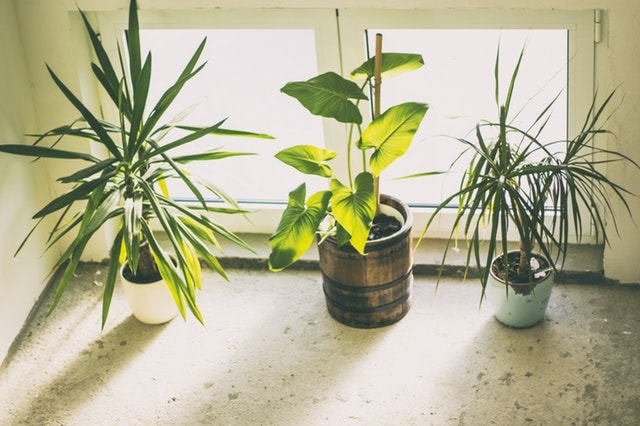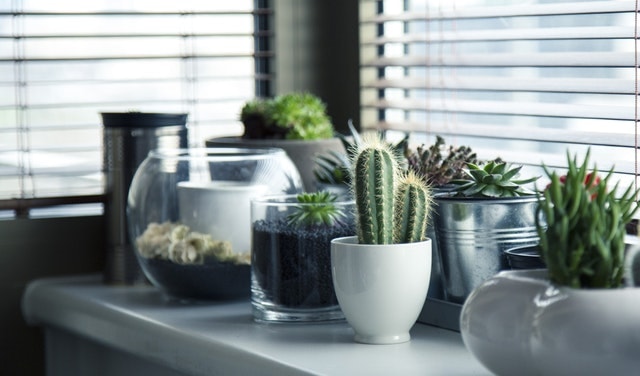The Dwarf Umbrella Tree, scientifically known as Schefflera arboricola, is a popular choice among indoor plant enthusiasts for its elegant foliage and easy-care nature. Propagating this charming plant is a rewarding endeavor that allows you to expand your collection or share its beauty with friends and family. Whether you’re a seasoned gardener or a novice plant parent, propagating a Dwarf Umbrella Tree can be a straightforward and enjoyable process. Here’s a step-by-step guide to help you successfully propagate your own Dwarf Umbrella Tree:
1. Selecting the Propagation Method:
There are several methods to propagate a Dwarf Umbrella Tree, including stem cuttings, air layering, and division. Stem cuttings are the most common and easiest method for beginners.
2. Gathering Materials:
Before you begin, ensure you have the necessary materials:
- Sharp, sterilized pruning shears or scissors
- Clean pots or containers with drainage holes
- High-quality potting mix or a suitable rooting medium
- Optional: rooting hormone (to promote root development)
3. Choosing Healthy Parent Plant:
Select a healthy and mature Dwarf Umbrella Tree as the parent plant for propagation. Look for a plant with vibrant foliage, free from diseases, pests, or any signs of stress.
4. Taking Stem Cuttings:
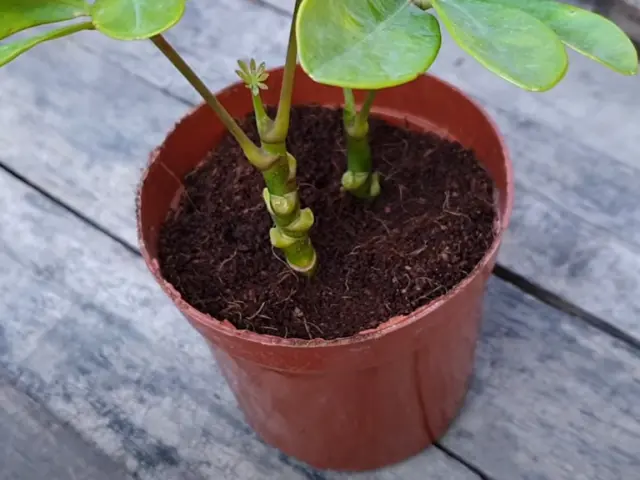
- Identify a healthy stem on the parent plant. Choose a stem with at least two sets of leaves.
- Using sharp pruning shears or scissors, make a clean cut just below a leaf node. Ensure the cutting is 4-6 inches long.
- Remove any leaves from the lower half of the cutting to expose the nodes.
- If desired, dip the cut end of the stem in rooting hormone to encourage root development.
5. Planting the Cuttings:
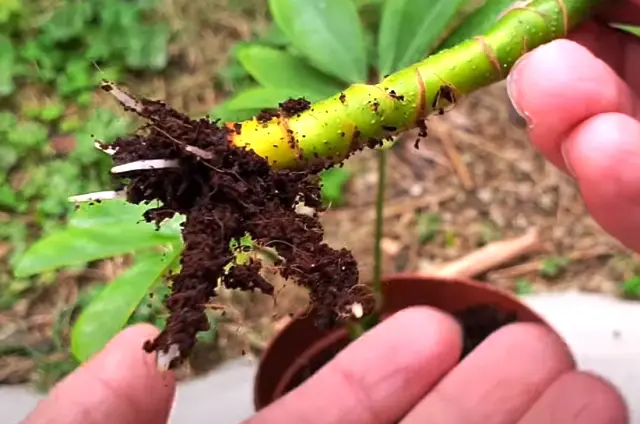
- Fill small pots or containers with well-draining potting mix or rooting medium.
- Make holes in the soil using a pencil or similar tool.
- Insert the cut end of each stem cutting into the prepared holes, ensuring at least one node is buried beneath the soil.
- Gently press the soil around the cuttings to provide stability.
6. Providing Ideal Conditions:
- Place the pots in a warm, bright location with indirect sunlight. Avoid placing them in direct sunlight, as this can cause stress to the cuttings.
- Keep the soil consistently moist but not waterlogged. Mist the cuttings regularly to maintain humidity levels.
- Consider covering the pots with a clear plastic bag or using a propagation dome to create a greenhouse-like environment, which can help retain moisture and promote root growth.
7. Monitoring Growth:
- Check the cuttings regularly for signs of growth, such as new leaves or roots emerging from the nodes.
- Be patient, as it may take several weeks for roots to develop.
- Once roots have formed and the cuttings have established themselves, gradually acclimate them to normal growing conditions.
8. Transplanting:
- Once the cuttings have developed a healthy root system and are actively growing, transplant them into larger pots with regular potting soil.
- Continue caring for the newly propagated plants as you would with mature Dwarf Umbrella Trees, providing adequate light, water, and occasional fertilizer.
Care for Dwarf Umbrella Tree
Caring for a Dwarf Umbrella Tree (Schefflera arboricola) is relatively easy, making it a popular choice for indoor plant enthusiasts. With the right conditions and regular maintenance, you can keep your Dwarf Umbrella Tree healthy and thriving for years to come. Here’s a comprehensive guide on how to care for this beautiful plant:
1. Light:
- Place your Dwarf Umbrella Tree in a location with bright, indirect light. It can tolerate some direct sunlight, but too much can scorch its leaves.
- If the plant is not receiving enough light, it may become leggy or develop pale leaves. Conversely, if it’s exposed to too much direct sunlight, the leaves may become yellow or brown.
2. Temperature:
- Dwarf Umbrella Trees prefer temperatures between 65°F to 80°F (18°C to 27°C).
- Protect the plant from cold drafts and sudden temperature fluctuations, as they can stress the plant.
3. Watering:
- Water your Dwarf Umbrella Tree thoroughly, allowing the top inch of soil to dry out between waterings.
- Avoid overwatering, as it can lead to root rot. Ensure proper drainage in the pot to prevent waterlogging.
- During the winter months, reduce watering frequency, as the plant’s growth slows down.
4. Humidity:
- Maintain moderate to high humidity levels, especially during the winter months when indoor air tends to be dry.
- Mist the leaves regularly or place a humidity tray filled with water and pebbles beneath the plant to increase humidity around it.
5. Soil:
- Use a well-draining potting mix with good aeration to prevent waterlogging.
- A mixture of peat moss, perlite, and coarse sand works well for Dwarf Umbrella Trees.
6. Fertilization:
- Feed your Dwarf Umbrella Tree with a balanced liquid fertilizer diluted to half strength every 2-4 weeks during the growing season (spring and summer).
- Reduce fertilization frequency or use a weaker solution in fall and winter when the plant’s growth slows down.
7. Pruning:
- Prune your Dwarf Umbrella Tree to maintain its shape and encourage bushier growth.
- Remove any dead, yellowing, or damaged leaves as soon as you notice them.
- You can also prune back leggy growth to promote denser foliage.
8. Repotting:
- Repot your Dwarf Umbrella Tree every 1-2 years or when it outgrows its current pot.
- Choose a pot that is slightly larger than the current one, with good drainage holes.
- Refresh the potting soil and inspect the roots, trimming any that are brown or mushy before repotting.
9. Pest Control:
- Keep an eye out for common pests such as spider mites, aphids, and scale insects.
- If you notice any pests, isolate the affected plant and treat it with insecticidal soap or neem oil.
- Regularly inspect the plant for signs of pest infestation, especially on the undersides of leaves and along stems.
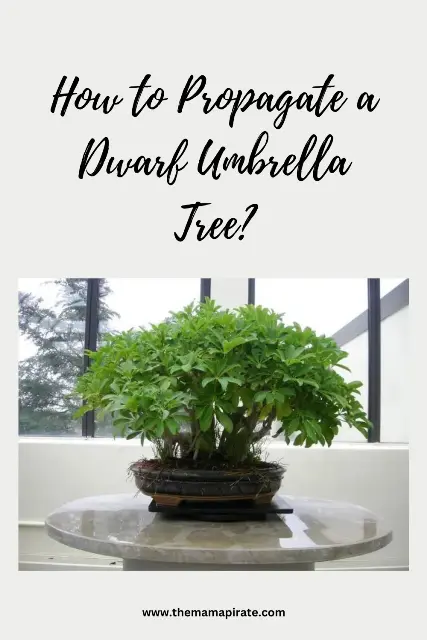
MORE POSTS: 11 Best Dwarf Trees for Pots

